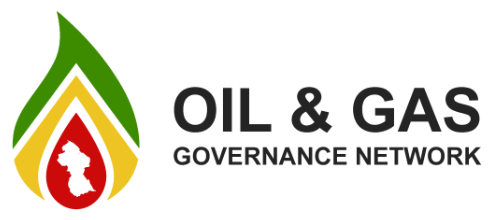Hello Guyanese citizens, in this video, we want to compare the Guyana 2016 oil contract with the Suriname 2011 oil contract. Suriname is a good benchmark to use as it is our next-door neighbor, and our oil blocks are close to each other in the same areas of the ocean offshore.
The Contracts for Guyana and Suriname appear similar in form but are vastly different in the following 7 key areas:
- Import Duties – Import duties are taxes paid on goods brought into Guyana from another country. Goods can be raw materials which are brought in for the purpose of constructing a supermarket or equipment to build roads. The import duties are paid by the person or business that is bringing the goods into Guyana. For example, steel pipes used for building a supermarket would be taxed through import duties. The tax rate for import duties ranges from 5% to 150% depending on if it is a raw material or a finished good.
- Royalty Payments – these are payments made by companies to the People of Guyana for the ownership rights and use of our natural resources. In the case of the Oil & Gas industry, these are payments made to the People of Guyana for the use of the oil blocks. These payments are made by the Oil & Gas companies – Exxon, Hess, and CNOOC now operating in the Stabroek Block. Usually, royalty is a percentage of the quantity of the oil produced.
- Capital Cost Recovery – Capital are items such as machinery or equipment that are bought and used by the Oil & Gas companies in the production of crude oil. Capital can be FPSOs, also called Floating Production and Storage Offloading ships. With regards to the Guyana oil contract, capital cost recovery and other costs such as operating costs are deducted at a maximum of 75 % of gross revenue of oil produced and sold by the companies.
- Taxation of Profits –After the company pays off all its expenses from its total gross income, whatever is left is the net income or profits. The Government collects income tax from individuals or businesses on the net income or profits. The income tax rate is typically 40% for commercial companies. For example, a company that has earnings of US$100 million, would pay income tax of US$40 million to the Guyana Revenue Authority.
- Corporate Social Responsibility – this is a commitment between the Government of Guyana and the Oil & Gas companies as their responsibility to positively contribute to the development of human capital in Guyana through technical training, jobs, culture, sports, and arts.
- Environmental Responsibility – This is a commitment by companies to protect the natural environment in which they operate. For example, an Oil & Gas company would make a commitment to protect the fishing industry from hazardous waste in the oil production process. Further, as part of the global environment, Oil & Gas companies have a commitment to reduce gas flaring to acceptable, “pilot” levels. As we know, flaring can cause damage to humans, plants, and animals.
- Insurance – This is a guarantee of protection or compensation in the event of accidental loss, death, or damage to the environment.
COMPARISON OF THE CURRENT OIL CONTRACTS
| # | Financial Areas | Guyana | Suriname |
| 1 | Import Duties | Exempted | Exempted |
| 2 | Royalty Payments | 2% of gross income | 6.25% of gross income |
| 3 | Capital Cost Recovery | 75% of gross income | 80% of gross income |
| 4 | Taxation of Profits | Oil Companies pay: 0% Other Companies pay: 40% | All Companies: 36% |
| 5 | Social Responsibility | Oil companies contribute US$300,000 per year | Oil companies contribute during Exploration – US$100,000 After Exploration – US$400,000 US per year. |
| 6 | Environmental Responsibility | Liability: Guyana | Liability: Oil Companies |
| 7 | Insurance | Liability: Guyana | Liability: Oil Companies |
CONCLUSIONS AND RECOMMENDATIONS FOR GUYANESE CITIZENS:
- For the Liza 1 well in the Stabroek Block, the projected average take for Guyana would be less than 14.5 % of revenues. In Suriname, the average take is estimated at 36%.
- Overall, compared to Guyana, Suriname collects 4.25% more royalty.
- Guyana collects no income taxes but Suriname collects taxes on oil company profits at the rate of 36%.
- In terms of overall income, Suriname’s contract yields a higher income that Guyana’s income.
- Guyana’s risk to exposure to environmental loss is significant, given the current lack of protections in place for which it is not clear if there is insurance. In the event of an oil spill, Guyana will be liable for cleaning up the spill – which could leave the country in financial ruin and permanent environmental damage.
- Guyana received a signing bonus of US$18 million for the Stabroek Block which has 9 billion barrels of oil in proven reserves. Whereas Suriname received US$100 million for its Block 58 which has zero proven reserves.
- The Suriname’s government’s company called Staatsolie has participation rights in developing Suriname’s oil blocks. The Government of Guyana doesn’t have any participation rights in developing its oil blocks.
- OGGN recommends that since Guyana currently does not have the capability or capacity to monitor, audit, or verify the amount of oil that is produced and sold, Guyana should move to a Revenue Sharing Model to save on auditing costs and reduce the need to micromanage the entire oil production process. This would simplify the oil contract such that Guyana is the beneficiary of more of the revenues generated.
More information available at: www.oggn.org
https://www.argusmedia.com/en/news/2112069-suriname-draws-oil-drillers-as-new-government-looms






